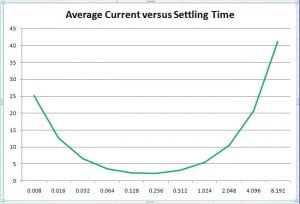Electronics Design To Save Energy
We have looked at how Low Power Electronics is a green strategy because it reduces the amount of power that has to be generated. And then we looked at a range of options for Reducing Electronics Power Consumption.
Now we are into specifics. The last post looked at Sleep Modes For Microcontrollers and how extending the Sleep Period and reducing the Sleep Current could dramatically Reduce Electronics Power Consumption.
Saving Electronics Power When Awake
The next logical step is to ensure that Power Consumption when awake is also reduced as much as possible. This can be a little tricky to get right as it can sometimes eliminate all the benefits you built up with you sleep strategy. The reasons for this are:
- you can use Analogue Electronics to reduce software power requirements but it has to be turned off during Sleep Mode
- if you do turn the power off to Analogue Electronics then there is a Settling Time after it is powered up
- using Smart Electronics Chips can increase overall Quiescent Current
- unless the Startup Time and Shutdown Time are quick, these can dominate the Power Consumption
Now there are some Software Architecture issues that affect these, especially the last one, but we will look at that in another post. For the last part of this post we will address the Electronics Design issues that have been raised here.
Electronics Design – To Save Power
Electronics Design can address these Power Consumption issues. Here is an example of a Power Consumption curve where an RC Time Constant must be taken into account to minimise average Power Consumption.

RC Time Constant affect Power Consumption
Here is a list of general strategies to select from to reduce Power Consumption:
- using the lowest feasible Clock Rate so Clocked Devices use less power
- using shorter Settling Times particularly by controlling RC Time Constants
- select semiconductors for lowest overall Quiescent Current taking awake and sleep operation into account
- ensure streamlined Startup and Shutdown operation
The overall Quiescent Current issues often gives the most difficulty. This can be addressed through Design Simulation either by SPICE, Software Modelling or a spreadsheet. For simpler systems the spreadsheet is often the easiest solution to implement. For very Software Intensive Systems the Software Modelling approach is the most reliable method. This will allow you to construct scenarios and be able to predict the Power Consumption implications for each of them.
For our Electronics Design and System Test methodology we often create a full system Software Model and so it is easy to use this same Software Model to accumulate the power consumption as it runs. This can also be automated and so simulate months of operation very quickly.
Next we will look at the role of Embedded Software in ensuring Power Consumption remains as low as possible.
Ray Keefe has been developing high quality and market leading electronics products in Australia for nearly 30 years. For more information go to his LinkedIn profile. This post is Copyright © Successful Endeavours Pty Ltd.



